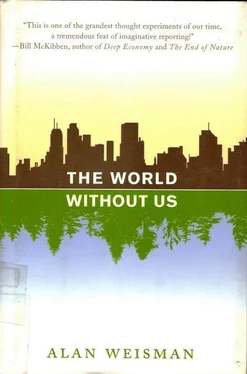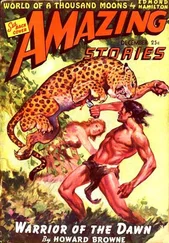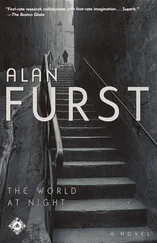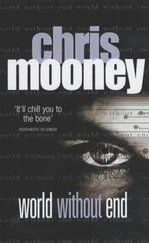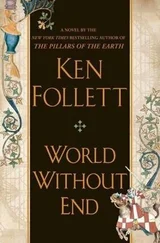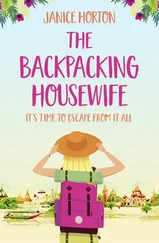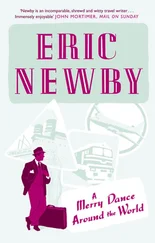Prominent in the transhumanist (sometimes called posthuman) movement are Oxford philosopher Nick Bostrom; heralded inventor Ray Kurzweil, originator of optical character recognition, flat-bed scanners, and print-to-speech reading machines for the blind; and Trinity College bioethicist James Hughes, author of Citizen Cyborg: Why Democratic Societies Must Respond to the Redesigned Human of the Future . However Faustian, their discussion is compelling in its lure of immortality and preternatural power—and almost touching in its Utopian faith that a machine could be made so perfect that it would transcend entropy.
The great barrier to robots and computers leaping the chasm between mere objects and life-forms, it’s often argued, is that no one has ever built a machine that is aware of itself: without being able to feel, a supercomputer might calculate rings around us, but still never be able to think about its place in the world. A more fundamental flaw, though, is that no machine has performed indefinitely without human maintenance. Even stuff without moving parts breaks down, and self-repair programs crash. Salvation, in the form of backup copies, could lead to a world of robots desperately trying to stay one clone up on the latest technology to which competitive knowledge was migrating—an all-consuming form of tail chasing that hearkens to the behavior of lower primates, who undoubtedly have more fun.
Even if posthumanists succeed in transferring themselves to circuitry, it won’t be anytime soon. For the rest of us, sentimentally clinging to our carbon-based human nature, voluntary-extinction advocate Les Knight’s twilight prophecy hits a vulnerable spot: the weariness that genuinely humane beings feel as they witness the collapse of much biology and beauty. The vision of a world relieved of our burden, with its flora and fauna blossoming wildly and wonderfully in every direction, is initially seductive. Yet it’s quickly followed by a stab of bereavement over the loss of all the wonder that humans have wrought amid our harm and excess. If that most wondrous of all human creations—a child—is never more to roll and play on the green Earth, then what really would be left of us? What of our spirit might be truly immortal?
Deferring for the moment the matter of afterlife as defined by religions great and small: After we’re all gone, what would become of the passion that believers and agnostics alike share—our irrepressible need to utter what’s in our souls? What will remain of our greatest creative forms of human expression?
CHAPTER 18

Art Beyond Us
BEHIND A CONVERTED Tucson warehouse that houses the Metalphysic Sculpture Studio, two foundry workers don rough-hide jackets and chaps, gloves of asbestos and stainless-steel mesh, and hard hats with eye shields. From a firebrick kiln, they remove preheated ceramic molds of the sculpted wings and body of an African white-backed vulture, which, once cast and welded together, will form a life-size bronze for the Philadelphia Zoo by wildlife artist Mark Rossi. They position these, sprue channels pointed upward, in a sand-filled turntable that slides on a track over to a drum-shaped, steel-clad liquid-propane furnace. The 20-pound ingots they loaded inside earlier have decomposed into 2,000°F bronze soup, sloshing on the same heat-resistant ceramic used for space shuttle tiles.
The furnace is tilt-mounted on an axle, so little effort is required to pour molten metal into the waiting molds. Six thousand years ago in Persia, the fuel was cordwood, and the molds were cavities in clay hillsides, not ceramic shells. But except for the copper-silicon alloy favored today over the copper-arsenic or copper-tin blends the ancients used, the process of immortalizing art in bronze is essentially the same.
And for the same reasons: Copper, like silver and gold, is one of the noble metals, resistant to corrosion. Some of our ancestors first noticed it oozing like honey from a piece of malachite near a campfire. When it cooled, they found it malleable, durable, and quite beautiful. They tried melting other rocks, mixed the results, and man-made metal alloys of unprecedented strength were born.
Some of the rocks they tested contained iron, a tough base metal, but one that oxidized rapidly. It proved more resistant when mixed with carbon ash, and even stronger after laborious hours of pumping a bellows to blast out excess carbon. The result was just enough forged steel for a few prized Damascus swords but not much else until 1855, when Henry Bessemer’s high-powered blowers finally turned steel from a luxury into a commodity.
But don’t be fooled, says David Olson, head materials scientist at the Colorado School of Mines, by massive steel buildings, steamrollers, tanks, railway tracks, or the shine on your stainless cutlery. Bronze sculpture will outlast all of it.
“Anything made of noble metals likely will exist forever. Any metal that comes from a mineral compound like iron oxide will go back to that compound. It was there for millions of years. We’ve just borrowed it from the oxygen and pumped it to a higher energy state. It all falls back there.”
Even stainless steel: “It’s one of many fantastic alloys designed to perform a specific service. In your kitchen drawer, it stays beautiful forever. Leave it in oxygen and salt water, it’s on its way out.”
Bronze artwork is doubly blessed. Scarce, expensive noble metals, like gold, platinum, and palladium, combine with nearly nothing in nature. Copper, more plentiful and slightly less regal, forms bonds when exposed to oxygen and sulfur, but—unlike iron, which crumbles as it rusts—the result is a film, two-thousandths to three-thousandths of an inch thick, that protects it from further corruption. These patinas, lovely in their own right, form part of the allure of bronze sculpture, which is at least 90 percent copper. Besides adding strength and making copper easier to weld, alloys can simply make it harder. One icon of Western culture that Olson expects to last long will be pre-1982 copper pennies (actually, they’re bronze, containing 5 percent zinc). Today, however, the U.S. cent is nearly all zinc, with only enough copper to memorialize the color of money once worth its face value.
That new, 97.6 percent zinc penny will leach away if tossed in the ocean, dooming Abe Lincoln’s visage to be filtered by shellfish within a century or so. The Statue of Liberty, however, which sculptor Frederic Auguste Bartholdi hammered from copper sheeting not much thicker, would oxidize with dignity at the bottom of New York Harbor should glaciers ever return to our warming world and knock her off her pedestal. In the end, Liberty’s sea green patina will thicken until she turns to stone, but the sculptor’s aesthetic intention will still be preserved for the fish to ponder. By then, Africa’s white-backed vultures may also have vanished, except in Mark Rossi’s bronze homage to them, in whatever is left of Philadelphia.
Even if the primeval Białowieża Puszcza forest spreads anew across Europe, the bronze memorial to its founder, horseback King Jagiełło in New York’s Central Park, will probably outlast it one distant day when the aging sun overheats and life on Earth finally winds down. In their Central Park West studio northwest of his statue, Manhattan art conservators Barbara Appelbaum and Paul Himmelstein coax fine old materials to remain in the high-energy state to which artists have taken them. They are acutely aware of the lasting power of things elemental.
“What we know of ancient textiles in China,” says Himmelstein, “is because silk was used to wrap bronzes.” Long after it disintegrated, the fabric’s texture remained imprinted in the copper salts of the patina. “And all we know of Greek textile is from paintings on fired ceramic vases.”
Читать дальше
